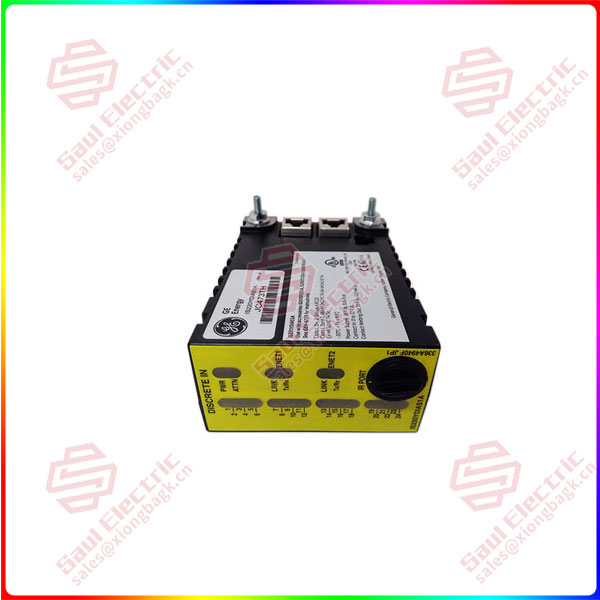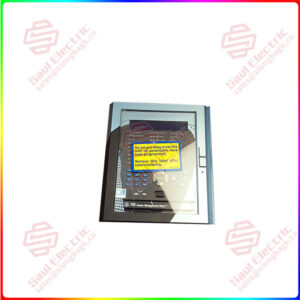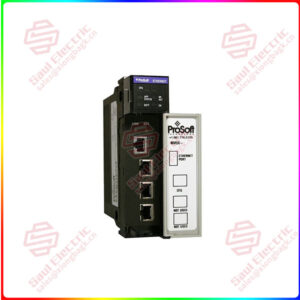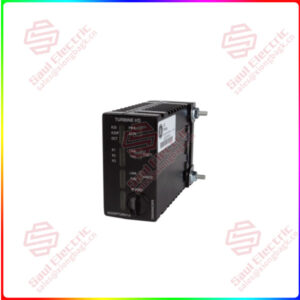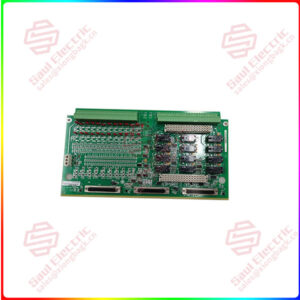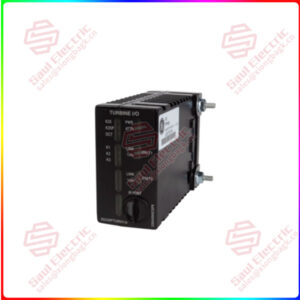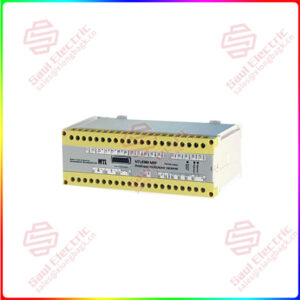Description
Overview
Essential details:IS220YDOAS1A discrete output pack
Part No.: IS220YDOAS1A
Manufacturer: General Electric
Country of Manufacture: United States of America (USA)
Number of buffered outputs: 14
N28 ripple: 280 mV pk
N28 maximum current: 400 mA
Temperature rating: 0 to 60 oC
Product Type: Discrete Output Pack
Availability: In Stock
Series: Mark VIeS
Functional Description
IS220YDOAS1A is a discrete output pack developed by GE. It is a part of Mark VIeS control system. The I/O pack serves as a crucial electrical interface, facilitating seamless connectivity between one or two I/O Ethernet networks and a discrete output terminal board. Its design encompasses a common processor board along with an acquisition board explicitly tailored to the discrete output function, ensuring efficient and precise operation.
Functionality and Capabilities
- Primarily, the pack exhibits remarkable capability, enabling control over a maximum of 12 relays.
- Its operational scope extends to accepting terminal board-specific feedback, providing a comprehensive and versatile solution for diverse application needs. Notably, it accommodates various electromagnetic relay types, such as TRLYS1B, D, and F terminal boards, thereby enhancing adaptability.
Input and Output Interfaces
- The I/O pack efficiently interfaces with external components through a dual RJ-45 Ethernet connector setup, bolstered by a three-pin power input mechanism.
- Output functionality is facilitated via a DC-37 pin connector, establishing a direct and reliable connection with the associated terminal board connector. This streamlined interface architecture ensures seamless transmission and reception of signals.
Diagnostic Features
- Incorporated within the I/O pack are indicator LEDs that serve as visual diagnostic aids. These LEDs play a pivotal role in providing real-time status updates and alerts, enhancing the overall monitoring and troubleshooting capabilities of the system. Their presence significantly contributes to the ease of identifying and resolving potential issues promptly.
- It stands as an indispensable component, offering a robust electrical bridge between Ethernet networks and discrete output terminal boards. With its versatile relay control, diverse compatibility with terminal boards, and intuitive diagnostic features, it serves as a reliable and adaptable solution for various industrial and technological applications.
IS220YDIAS1A
lf you need to inquire or purchase ,please send the product models to my email or call medirectly .
sunny He
[Email] sales@xiongbagk.cn
[Mobile] 86-18059884797
[WhatsApp] 86-18059884797
[Skype] sales@saulcontrol.com
IS220YDOAS1A discrete output pack
I/O Module Characteristics
- I/O modules are made up of an I/O pack that is mounted on a terminal board. The I/O pack includes a local processor running the QNX operating system as well as a data acquisition board. The terminal board includes a field wiring terminal block and passive circuits that connect the terminal block to the I/O pack.
- In the unlikely event that the module’s passive circuits fail, terminal blocks can be removed with field wiring attached. contain two barrier type, pluggable terminal blocks with 24 points each. With ring type lugs, each point can accept two 2.05 mm2 (0.081 in2) #12 AWG wires with 300 V insulation. Captive clamps are also provided for terminating bare wires.
- Center-to-center screw spacing is 9.53 mm (0.375 in). T-type modules are typically base-mounted and can accommodate multiple I/O packs. Box type terminal blocks on S-type modules accept one 2.05 mm2 (0.081 in2) #12 AWG wire or two 1.63 mm2 (0.064 in2) #14 AWG wires with 300 V insulation per point. Center-to-center screw spacing is 5.08 mm (0.2 in). S-type modules are DIN-rail and base mounted, with a single I/O pack.
Installation
- Mounting on a Sheet Metal Carrier: The component, along with the plastic insulator, is mounted on a sheet metal carrier. The carrier provides structural support and protection for the component. The component and insulator are securely attached to the carrier to ensure stability during operation.
- Mounting on a DIN Rail: The sheet metal carrier, with the component and insulator mounted on it, is then mounted on a DIN rail. DIN rails are commonly used in industrial environments as a standardized method for mounting control and automation components. The DIN rail ensures secure and standardized installation of the component.
- Mounting in a Cabinet: In some cases, the board plus insulator assembly can be mounted on a sheet metal assembly, which is then bolted into a cabinet. This method allows for more organized and compact installation within the cabinet, facilitating easy access and maintenance of the component.
- Wiring Connections: The connections to the component are typically made by wiring directly to two sets of 48 terminal blocks. 18 AWG wires are commonly used for these connections. The upper set of terminals, known as TB1, is connected to the relay portion of the board, while the lower set of terminals, TB2, is connected to the contact input circuits. These terminal blocks provide a secure and reliable connection for the necessary wiring.
- Screw Assignments and Shield Termination: The screw assignments for the two sets of terminal blocks (TB1 and TB2) are the same as those on the relay board and the contact input terminal board. This standardization ensures consistency and ease of installation. Additionally, when using shielded cables, the shields should be properly terminated with their own bracket or grounding point to maintain proper grounding and minimize electromagnetic interference.


 1 Year Warranty
1 Year Warranty
